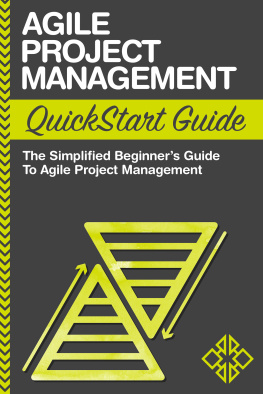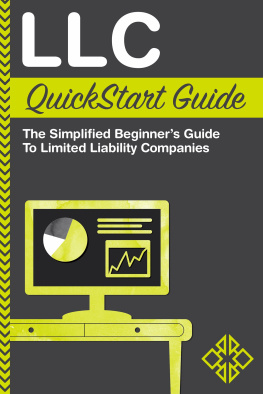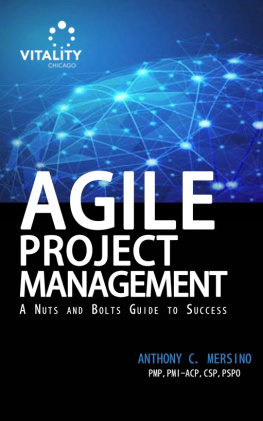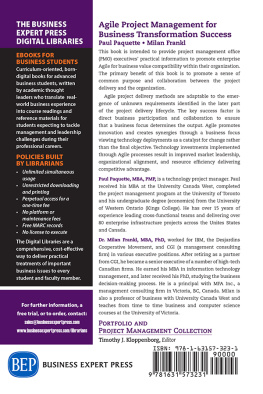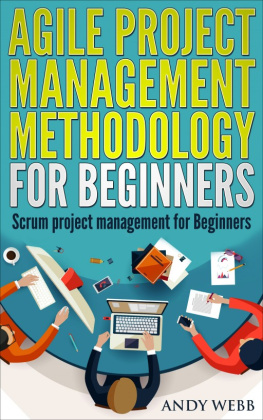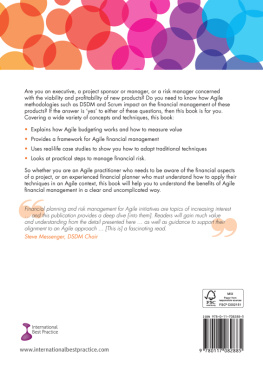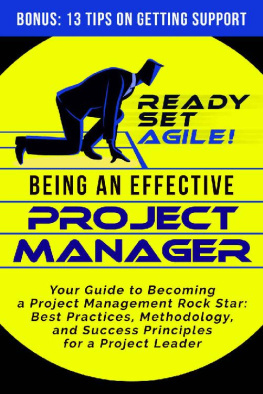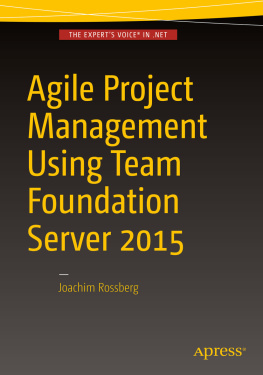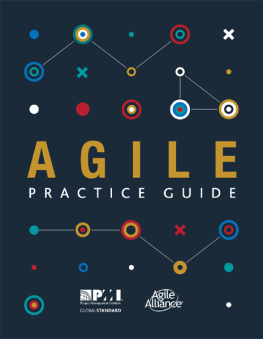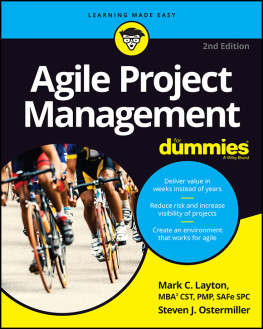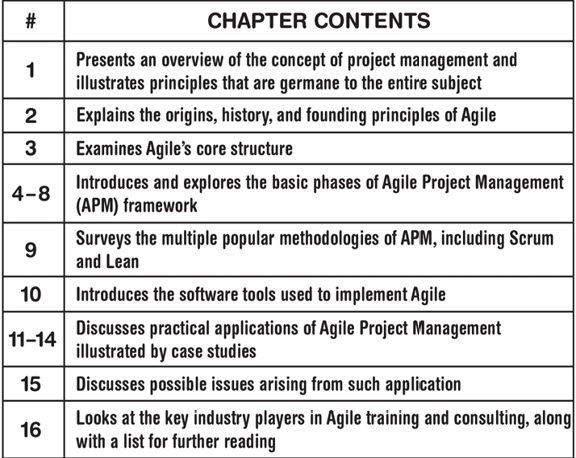Contents
Landmarks
Contents
Terms displayed in bold italic can be found defined in the glossary.

BEFORE YOU START READING,
DOWNLOAD YOUR FREE DIGITAL ASSETS!
Visit the URL below to access your free Digital Asset files that are included with the purchase of this book.

DOWNLOAD YOURS HERE:
www.clydebankmedia.com/agile-assets
Introduction
Some activities are only possible to execute successfully if they are associated with more than one person. They are either too extensive in their magnitude or too sophisticated in their nature to be performed by a single individual. They require too much work or a diversity of expertise that no one person possesses. It is then necessary to approach these activities using a team.
In addition to the overarching aim of satisfying the original objective, any project, whether in commerce or broader society, requires proper planning and execution, so that the available resources of time, money, and labor are appropriately utilized. The management of projects in this way is a distinct discipline in the corporate sphere, replete with its various styles and their proponents. Consider, for instance, Chinas famous Three Gorges Dam. This dam, which was completed in the early 2000s, is a truly gargantuan structure. The dam secures a reservoir 660 km in length containing approximately nine cubic miles of water weighing forty billion tons. This mass of water is so substantial that it actually affects the rotation of the earth to a slight yet significant extent, and it has shifted the position of the magnetic poles by nearly an inch. Its hydroelectric installation generates power equivalent to about twenty nuclear power reactors. The Three Gorges Dam is not only a marvel of engineering, its also a marvel of project management. Machines and materials must be procured. People have to be employed. Plans have to be drawn out, and everything must be coordinated intelligently.
But what if you could, with a simple stroke of a key, move an entire team of workers (or a crane for that matter) from one side of the 594-foot-wide Three Gorges Dam to the opposite side? What if you could move, resize, and reconfigure the dams massive turbines at will and perform hundreds of real-world tests measuring the energy output of the dam across a multitude of configurations? Would such flexibility change your approach to project management?
Information technology is more flexible and at times more unpredictable than the physical materials employed at a construction site. If you attempted to pursue an IT projectsoftware development, lets saythe same way you pursue the building of a dam, with an end-to-end ironclad blueprint of your build and a strict production schedule, then your lack of flexibility would likely prohibit you from delivering an optimal product. Your project management approach would be much stronger if you incorporated an element of intelligent flexibility on your path to achieving the best possible result. On the flip side, if you tried to build a dam flexibly, without the aid of a fairly precise blueprint, then youd be likely to waste copious amounts of time, money, and resources or, worse, build a dam that could not stand.
From massive public works projects to the creation of complex IT services, the concerns of project management persistently come into play. Many considerations of project management are universal, such as budget, design considerations, construction methods, time frame, marketability, key specifications, and performance thresholds. The approaches used when assessing these considerations, however, are not universal and will prove dramatically different depending on the nature of the project. A simple copy and paste can move miles of powerful code; the same agility is not felt in matters of concrete, stone, and lumber. Agile is a popular methodology of modern project management that, while particularly fitting for software development endeavors, can be applied across a broad range of production environments. This book examines Agile in detail, including its history, its techniques, and its implications for those who use it. The book begins by exploring the relevance of project management at large. It then proceeds to work through the various aspects of Agile before reviewing the Envision, Speculate, Explore, Adapt, and Close phases of Agile Project Management. A series of case studies in Agile are reviewed in the later chapters, followed by a review of the popular criticisms that have been directed at Agile. There is also an overview of the Agile sub-industry that has arisen, in terms of both advisory services and the software tools that its use necessitates.
This book is intended as an introduction to the Agile Project Management system.
Those interested in applying Agile to their projects, either as an experiment or on the basis of a more serious recommendation, should remember that the information provided by this text is general in nature and does not constitute specific professional advice or organizational strategy. As a preliminary source of information, however, it should enable the reader to pursue deeper inquiries and ultimately decide on the suitability of the Agile system and, once that has been established, the exact variation to apply.
Finally, though our contemporaries may not all be in agreement, this text will treat Agile as a proper noun while concurrently acknowledging that Agile methodologies span many industries and encompass several distinctly defined frameworks. Nevertheless, we take the position that Agile Project Management (APM), can signify a distinct structure (Envision, Speculate, Explore, Adapt, Close), per the outline presented in Chapters 3 through 7.
| 1 | History of Agile Project Management
In This Chapter
- The History of Agile
- Agile Principles
The Agile Alliance
The concept of a standardized or prescribed strategy for project management is not new. Different organizations or cultures may have practiced their own methods in regulating large labor forces or assigning resources to the projects in which they engaged. However, it was only since the middle of the 1950s that the concept began to be regarded as a more formal discipline and attract its official terminology. At present, it is taken seriously in commerce and elsewhere, as evidenced by, for example, the Association for Project Management (APM) in the UK or the American Society for the Advancement of Project Management (ASAPM).
Agile Project Management to large extent represents a reformation of or departure from several of the preexisting 20th century project management methodologies. Therefore, the formulation and subsequent promotion of a discrete and self-contained management methodology is not a novelty, nor is it surprising that it draws on existing systems of both project and business management.
Agile Project Management (or Agile for short) was devised within the software industry. The process of creating new software is known specifically as development. The initiators of the Agile doctrine were all software developers. This is possibly why it has such a strong association with the IT sector. Proponents of Agile have made the assertion that it is applicable to any industry, and there is literature examining how this has happened in practice. Its potential for deployment in activities outside of IT will be discussed in later chapters of this book.

